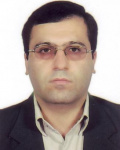| نویسندگان | Hossein AMIRI |
|---|
| نشریه | International Journal of Thermal Sciences |
|---|
| شماره صفحات | 1-18 |
|---|
| شماره سریال | 146 |
|---|
| شماره مجلد | 1 |
|---|
| ضریب تاثیر (IF) | 3.615 |
|---|
| نوع مقاله | Full Paper |
|---|
| تاریخ انتشار | 2019 |
|---|
| رتبه نشریه | ISI |
|---|
| نوع نشریه | چاپی |
|---|
| کشور محل چاپ | ایران |
|---|
| نمایه نشریه | JCR،Scopus |
|---|
چکیده مقاله
In the present study, spectral radiative entropy generation analysis is presented for radiative heat transfer between
two parallel plates containing non-gray absorbing and emitting medium at radiative equilibrium. In order
to evaluate the effect of boundary condition (BC) on the entropy generation, two configurations of BC are
considered. In the first configuration, two bounding walls are assumed to be at prescribed temperatures. In the
second configuration, one wall is assumed to be at a prescribed temperature and the other wall is assumed to
have prescribed heat flux BC. The discrete ordinates method and the finite volume method are respectively used
for the angular and spatial discretization of the radiative transfer equation and radiative entropy generation
equations. While the correlated-k (CK) non-gray model is used to evaluate spectral radiative properties. Five
cases are considered, including two homogeneous cases and two non-homogeneous cases with a single participating
gas (i.e. H2O or CO2) and one homogeneous case with a mixture of H2O, CO2 and soot particles. Spectral,
volumetric and total radiative entropy generations are calculated for each BC configuration and case. Also, the
effects of the concentration of participating gas, wall emissivity and total gas pressure on radiative entropy
generation are attentively analyzed. The results show that irreversible radiative transfer at the wall with lower
temperature is the main source of radiative entropy generation in the system. Soot particles increase radiative
entropy generation due to absorption and emission process but decrease radiative entropy generation due to
walls radiation. The radiative entropy generation is approximately constant when the concentration of participating
gas varies for both BC’s. Total radiative entropy generation for the system with the prescribed temperature
at walls significantly increases with the increase of wall emissivity; conversely, for the system with mixed
BC, total radiative entropy generation linearly decreases. Furthermore, for the system with the prescribed
temperature at the walls, radiative entropy generation slightly decreases when medium total pressure increases;
while for the problems with mixed BC, increasing medium total pressure does not significantly effect on radiative
entropy generation. Finally, results demonstrate that the wall emissivity has a considerable effect on the radiative
entropy generation for radiative heat transfer in the non-gray medium in radiative equilibrium.
لینک ثابت مقاله
